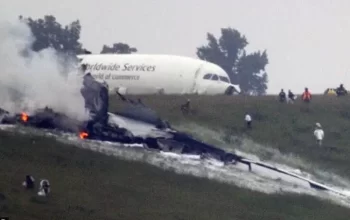Netanyahu insists that the conflict’s next chapter hinges on the group surrendering all arms, ceasing its In recent remarks, Israeli Prime Minister Benjamin Netanyahu made clear that the war in Gaza will not conclude unless and until Hamas is effectively disarmed and its military infrastructure dismantled. This demand sets the stage for what Israeli officials frame as the crucial next phase of the conflict. شفق نيوز+2NZ Herald+2
Context and key demands
Netanyahu insists that the conflict’s next chapter hinges on the group surrendering all arms, ceasing its capacity to act as an armed military force, and accepting a demilitarised Gaza arena. He stated that “Phase B” of any agreement is predicated on weapons being removed and no factories or smuggling routes remaining. شفق نيوز+1 The demand for disarmament is deeply embedded in the peace-deal negotiations mediated by the U.S. and other international actors. Wikipedia+1
For Israel, the objective extends beyond a simple ceasefire. شفق نيوز
Why this matters
Disarmament as a condition: Linking an end to fighting with the surrender of weapons places a very high bar for resolution.
Power-structure implications: For Gaza, surrendering arms would transform the local power dynamics. Hamas has controlled not only military capabilities but also governance, internal security and external relations. Its disarmament could mean a major shift in who holds influence and how Gaza is governed.
Reports quote him as warning of “the hard way” if the “easy way” fails. NZ Herald+1 This raises the risk of renewed military escalation.
Humanitarian and diplomatic stakes: While focus is on arms and security, the humanitarian situation in Gaza remains dire. Aid, reconstruction, civilian safety and governance transitions are all hanging in the balance. The demand for disarmament could delay or complicate these other urgent needs.
Hamas response and obstacles
Hamas officials have resisted full disarmament. Reuters From their perspective, surrendering arms unilaterally would undermine their negotiating position on governance and statehood.
Practical obstacles abound: concealed weapons caches, smuggling routes, underground factories, tunnels and the sheer number of fighters all complicate any serious demilitarisation effort.
In many respects, the standoff centres on who controls Gaza’s security after the war. Hamas sees itself as the guarantor of resistance and local order; Israel views its armed wing as an existential threat. Bridging that divide is the core challenge.
What’s next and possible scenarios
- Voluntary disarmament pathway
If Hamas agrees to dismantle its military wing, hand over weapons, and submit to external monitoring, the war could transition into a reconstruction and governance phase. Aid flows, border crossings reopen, and the focus shifts to rebuilding. This would represent the “easy” path Netanyahu referenced. NZ Herald - Forced disarmament / renewed fighting
Should Hamas refuse, Israel has signalled readiness to proceed “the hard way” — military operations aimed at eliminating the threat, possibly re-entering deeper into Gaza, renewing ground offensives or targeting infrastructure. This path carries higher civilian risk and international fallout. - Stalemate and protracted conflict
There’s also a possibility that the situation drags on: partial agreements, intermittent ceasefires, but no full disarmament. In such a scenario, the war effectively becomes frozen — the fighting may stop for a time, but the underlying causes remain unsolved, and the humanitarian crisis continues. - Hybrid model with monitored arms-control
A compromise might emerge where Hamas retains limited policing powers, but heavy weapons are collected, tunnels closed, and foreign monitors installed. This model would require robust verification mechanisms and trust-building.
Implications for broader region
The outcome of this disarmament demand will ripple beyond Gaza. It influences Israel-Palestine dynamics, Israeli domestic politics, U.S. and regional diplomacy, and sets precedent for how armed groups integrate (or not) into post-war governance.
For Palestinians, it raises questions of sovereignty, security and the nature of statehood.
In conclusion
By making disarmament of Hamas a precondition to ending the war, Netanyahu has placed one of the most significant bargains on the table: shelve the weapons or face continued conflict. The keyphrase here — Hamas disarmament requirement — captures the critical hinge upon which the Gaza war’s next phase turns.
Whether this requirement will lead to a stable peace, a renewed eruption of violence, or a prolonged stalemate remains uncertain.



